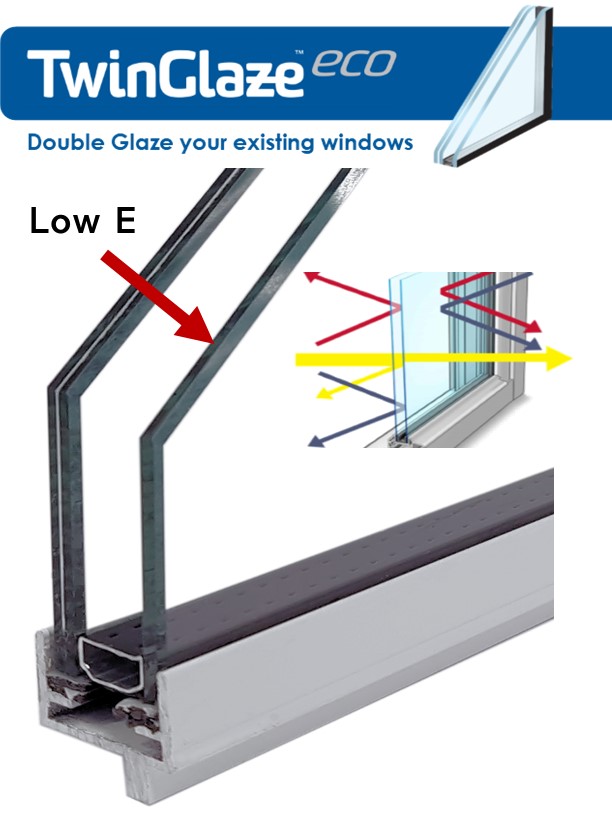All Categories
Featured
Table of Contents
Buy Double Glazed Upvc Sliding Doors In Sydney in West Leederville WA
That window can transfer more solar heat in winter than in summer season. A west-facing window on a summer's afternoon has an angle of occurrence from near 0 approximately 30 with a large efficient location of solar radiation. A north-facing window, in summer, has a high angle of occurrence and a low reliable area of solar radiation, so can transmit less heat than a west-facing one.

You can rapidly and quickly enhance the thermal performance of your house by changing your windows. This is one of the most reliable techniques of restoration to achieve better thermal convenience. There are countless types of glass and frames to select from. Choosing the right ones is essential to enhancing the energy effectiveness of your home.
Glazing in Beldon WA
Single glazing with clear glass is not very efficient when it comes to heat loss or gain. To enhance efficiency, you can utilize single glazing with a more energy-efficient type of glass such as low emissivity (low-e) glass.
Numerous layers can be put together with sealed cavities in between each sheet of glass. IGUs generally offer much better energy efficiency than single glazing, because they send less energy. The energy performance of IGUs likewise depends on: the residential or commercial properties of each layer of glass. Various glass types (for instance, clear and low-e glass) can be assembled in an IGU.
Double Glazed Windows in Brookdale Perth

IGU cavities can be filled with air or a more inert, low-conductivity gas such as argon the width of the cavity. Larger cavities offer lower (much better) U values, with 12mm generally accepted as the preferred gap how well the cavity is sealed.
If argon is installed to the cavity in location of air, moisture is reliably omitted the level of desiccant (drying representative). The spacer (metal or polymer strip) that separates the glass layers includes a desiccant to soak up any wetness. Inadequate desiccant may cause moisture to condense on the glass surface area in cold conditions, minimizing thermal efficiency.
Double Glazed Windows & Doors Melbourne & Sydney in Bicton Perth
IGUs can deliver better energy performance for all environments, especially in heated and air-conditioned houses. Cross-section detail of single, double and triple-glazing systems Low emissivity glass (typically referred to as low-e glass) minimizes heat transfer. Low-e glass might be either high or low transmission: High transmission low-e glass has a finish that permits daylight from the sun to pass into the house to accomplish excellent solar heat gain, but decreases the amount of the long wavelength infrared heat that can leave back through the window.
Low-e glass has either a pyrolytic finishing or a vacuum-deposited thin movie metal finish. Pyrolytic coverings are long lasting and can be utilized for any glazing; vacuum-deposited finishes are soft and are only utilized within IGUs. Low-e coatings can considerably improve both U worth and SHGC; nevertheless, they must be utilized correctly or they will either degrade or stop working to perform as required.
Why Is Double Glazing So Important In Winter? in Winthrop Perth
Low-e coatings can be used in combination with clear, toned or reflective glass. Low-e finishings on glazing can minimize heat transfer where needed Photo: Department of Industry, Science, Energy and Resources Toned glass has colouring additives included during manufacture. It is readily available in numerous colours, normally bronze, grey, blue and green.
Table of Contents
Latest Posts
Does Double Glazing Keep Heat Out in South Fremantle Perth
Which Double Glazed Windows Are Best For Summer? in Kalamunda WA
Why Install Stunning Double Glazing Windows During Summer? in Hamilton Hill Perth
More
Latest Posts
Does Double Glazing Keep Heat Out in South Fremantle Perth
Which Double Glazed Windows Are Best For Summer? in Kalamunda WA
Why Install Stunning Double Glazing Windows During Summer? in Hamilton Hill Perth